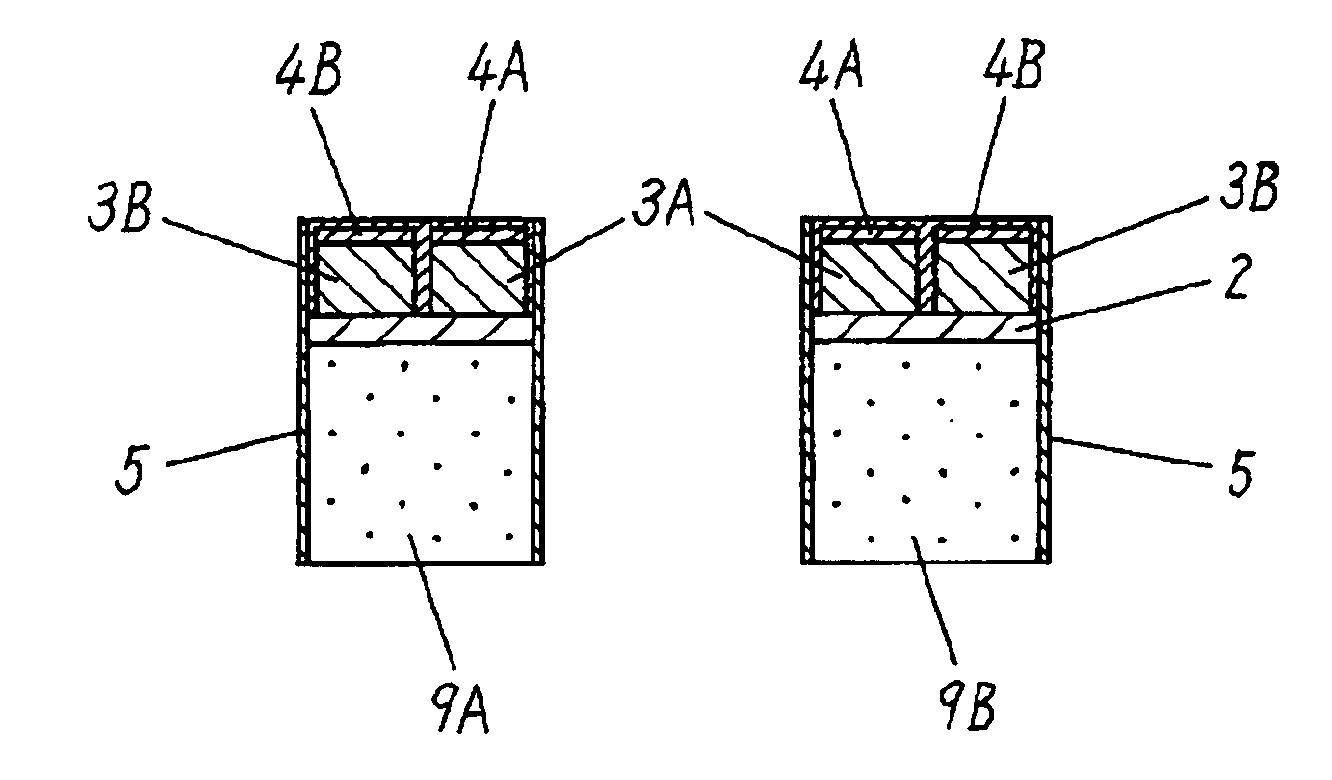Method for manufacturing resonant device
a technology of resonance device and manufacturing method, which is applied in the direction of turn-sensitive device, impedence network, instruments, etc., can solve the problems of difficult to use gap frequency as an index for processing body, and difficulty in accurately measuring actual resonance frequency, etc., and achieve accurate coupling of vibration
- Summary
- Abstract
- Description
- Claims
- Application Information
AI Technical Summary
Benefits of technology
Problems solved by technology
Method used
Image
Examples
exemplary embodiment 1
[0023]FIG. 1 is a perspective view of an angular velocity sensor, a resonant device in accordance with Exemplary Embodiments of the present invention. The sensor includes body 1 having a tuning-fork shape and made of silicon, lower electrode 2 on an upper surface of body 1 and made of platinum, driving piezoelectric member 3A and detecting piezoelectric member 3B on an upper surface of lower electrode 2 and made of lead zirconate titanate, driving electrode 4A on an upper surface of driving piezoelectric member 3A, and detecting electrode 4B on an upper surface of detecting piezoelectric member 3B. Lower electrode 2 and upper electrode 4 are connected to an exterior via lead-wires and electrode pad 6 on base 7 of body 1.
[0024]An operation of the angular velocity sensor will be described below with reference to FIG. 1. Upper electrode 4 is separated into driving electrode 4A and detecting electrode 4B. Driving piezoelectric member 3A is located between electrode 4A and lower electrod...
exemplary embodiment 2
[0039]FIG. 14 is a sectional view of a body of an angular velocity sensor in accordance with Exemplary Embodiment 2 of the present invention. The sensor, differently from that of Embodiment 1, has a protective film made of carbon-fluoride polymer formed on an under surface of the body instead of a lateral surface before etching with xenon fluoride gas, as shown in FIG. 14. The protective film causes the xenon fluoride gas to etch exclusively silicon of a lateral surface of the body. As a result, only a resonance frequency in a driving direction decreases according to progress of the etching. This allows a gap frequency between resonant frequencies of a driving direction and a detecting direction to be adjusted.
exemplary embodiment 3
[0040]FIG. 15 is a sectional view of a body of an angular velocity sensor in accordance with Exemplary Embodiment 3 of the present invention. The sensor, differently from those of Embodiments 1 and 2, has a protective film made of carbon fluoride polymer formed not only on a lateral surface or an under surface of the body, but also on portions of both the lateral surface and the under surface. Portions of corners of the body are exposed, as shown in FIG. 15. In FIG. 15, the body may have a cross-section having a parallelogram shape, and have corners having acute-angled sections exposed.
[0041]This structure allows xenon fluoride gas to etch these exposed corners exclusively. In the body having the cross section having the parallelogram shape, respective vibrations in a driving direction and a detecting direction may be coupled with each other, however, the foregoing structure can cancel this coupling.
[0042]In the method of manufacturing the resonant device according to the embodiment...
PUM
| Property | Measurement | Unit |
|---|---|---|
| resonance frequencies | aaaaa | aaaaa |
| resonance frequencies | aaaaa | aaaaa |
| thickness | aaaaa | aaaaa |
Abstract
Description
Claims
Application Information
 Login to View More
Login to View More - R&D
- Intellectual Property
- Life Sciences
- Materials
- Tech Scout
- Unparalleled Data Quality
- Higher Quality Content
- 60% Fewer Hallucinations
Browse by: Latest US Patents, China's latest patents, Technical Efficacy Thesaurus, Application Domain, Technology Topic, Popular Technical Reports.
© 2025 PatSnap. All rights reserved.Legal|Privacy policy|Modern Slavery Act Transparency Statement|Sitemap|About US| Contact US: help@patsnap.com



